The use of simulation models is a necessity and also an aid in the decision-making process in sustainable agricultural systems. Organizing the experimental knowledge of crop production systems without the book keeping and deductive methods of mathematics is very difficult. This book aims to guide readers in the process by which the properties of the systems can be grasped in the framework of mathematical structure with minimal mathematical prerequisites. The objective of this book is to help the undergraduate, graduate and post-graduate students in the disciplines of agronomy, plant breeding, agricultural meteorology, crop physiology, agricultural economics, entomology, plant pathology, soil science and ecology (environmental science). This book may also be useful for administrators in various agricultural universities in order to direct research, extension and teaching activities. Planners at national and state levels may also benefit from this book
Modeling Crop Production Systems: Principles and Application 1st Edition by P Singh (Author)
KSh 5,800.00
The use of simulation models is a necessity and also an aid in the decision-making process in sustainable agricultural systems. Organizing the experimental knowledge of crop production systems without the book keeping and deductive methods of mathematics is very difficult. This book aims to guide readers in the process by which the properties of the systems can be grasped in the framework of mathematical structure with minimal mathematical prerequisites. The objective of this book is to help the undergraduate, graduate and post-graduate students in the disciplines of agronomy, plant breeding, agricultural meteorology, crop physiology, agricultural economics, entomology, plant pathology, soil science and ecology (environmental science). This book may also be useful for administrators in various agricultural universities in order to direct research, extension and teaching activities. Planners at national and state levels may also benefit from this book
2 in stock
| Categories: | Agriculture, Science & Mathematics |
|---|
Related products
-
Environmental Engineering Paperback – 14 July 2017
KSh 7,500.00The book covers the important aspects of water, air and noise pollution. Using a multidisciplinary approach, it highlights the impact of environmental pollution in the world. It also suggests methods for controlling and scientific monitoring of pollution-causing agents. Also included are chapters on efficient guidelines and standards, radioactive waste, solid waste disposal and sewage treatment, oil pollution and role of insecticides. Pollution in tanneries, fertilizer industry, and pulp and paper industries is also covered. The last few chapters are devoted to environmental management, benefit-cost analysis and mathematical modelling for environmental pollution control.
-
Agricultural and Agribusiness Law An Introduction for Non-Lawyers
KSh 8,330.00This introductory textbook provides an overview of the concepts necessary for an understanding of agricultural and agribusiness law. The text will help students of land-based industries with little or no legal background to appreciate and identify issues that may require referral or consultation with legal counsel. This new edition is fully revised and updated, particularly addressing developments in taxation and trade, and includes a new chapter on criminal law, an area of increasing relevance to agriculture.
Each concise chapter addresses a different legal issue that those employed in agriculture and agribusiness may face, and both federal law and representative examples of state law are included. In addition to traditional topics such as contracts, property law, and estate planning, the book also covers more contemporary issues such as organic certification, animal law, genetically engineered crops, and food safety.
Agricultural law extends beyond those directly engaged in farming to those in agribusiness who provide services and inputs to farmers, buy farmers’ products, store or transport products, manufacture food products and serve as intermediaries between farmers and consumers. The book will, therefore, also serve as a reference and a guide for those employed in agribusiness and agriculture.
-
The Philosophy of Mathematics Education
KSh 21,115.00Although many agree that all teaching rests on a theory of knowledge, there has been no in-depth exploration of the implications of the philosophy of mathematics for education. This is Paul Ernest’s aim. Building on the work of Lakatos and Wittgenstein it challenges the prevalent notion that mathematical knowledge is certain, absolute and neutral, and offers instead an account of mathematics as a social construction. This has profound educational implications for social issues, including gender, race and multiculturalism; for pedagogy, including investigations and problem solving; and challenges hierarchical views of mathematics, learning and ability. Beyond this, the book offers a well-grounded model of five educational ideologies, each with its own epistemology, values, aims and social group of adherents. An analysis of the impact of these groups on the National Curriculum results in a powerful critique, revealing the questionable assumptions, values and interests upon which it rests. The book finishes on an optimistic note, arguing that pedagogy, left unspecified by the National Curriculum, is the way to achieve the radical aims of educating confident problem posers and solvers who are able to critically evaluate the social uses of mathematics.
-
Linear Algebra
Linear algebra
The development of the internationally standardized language ALGOL has made it possible to prepare procedures which can be used without modification whenever a computer with an ALGOL translator is available. Volume Ia in this series gave details of the restricted version of ALGOL which is to be employed throughout the Handbook, and volume Ib described its implementation on a computer. Each of the subsequent volumes will be devoted to a presentation of the basic algorithms in some specific areas of numerical analysis. This is the first such volume and it was feIt that the topic Linear Algebra was a natural choice, since the relevant algorithms are perhaps the most widely used in numerical analysis and have the advantage of forming a weil defined dass. The algorithms described here fall into two main categories, associated with the solution of linear systems and the algebraic eigenvalue problem respectively and each set is preceded by an introductory chapter giving a comparative assessment. -
Agricultural Science and Food Security
KSh 23,800.00Agricultural Science and Food Security discusses the challenges and hurdles in global food security. The scope of the book includes, but not limited to agricultural science, sustainable agricultural food production, food production and efficiency in utilization of agricultural resources. The main reason is the poor management of pests, weeds ad diseases in crops that is obstructing the way of food security globally ad to address the same, management of same has been discussed in details to maximize production of food crops.
-
Tropical Roots and Tuber Crops: Cassava, Sweet Potato, Yams and Aroids (Crop Production Science in Horticulture)
KSh 8,260.00Root and tuber crops are important to agriculture, food security and income for 2.2 billion people in developing countries. These species produce large quantities of dietary energy and have stable yields under difficult environmental conditions. This second edition of Tropical Root and Tuber Crops is an authoritative treatment of four important root and tuber crops: cassava, sweet potato, yams, and aroids.
The same format is followed for each crop: Origin and History, Taxonomy and Botany, Breeding and Genetics, Developmental Physiology, Agronomy, Pests and Diseases, Post-Harvest Quality and Marketing. This new edition reviews the scientific literature produced during the last decade and presents major technical advancements. Modern molecular tools have been used to clarify the phylogeny, taxonomy and origin of these species. Similar advances have been made in physiology, agronomy, pathology and product chemistry. It is essential reading for students, researchers and horticulturists.
-
Agricultural Marketing and Price Analysis
KSh 9,330.00Norwood and Lusk provide a fresh approach to marketing and price analysis that speaks to undergraduate students. In addition to providing thorough coverage of core topics, they address exciting developments and emerging areas of research in the field. Friendly and engaging, Agricultural Marketing and Price Analysis presents a comprehensive approach to agricultural price analysis, agricultural market structures, and agricultural marketing strategies.
Unique to this book is the inclusion of the equilibrium displacement model and a chapter on consumer behavior and research. The Meet the Professional feature illustrates how the economic principles covered fit into the careers students will soon enter. End-of-chapter crossword puzzles and study questions assist in learning terminology and test preparation. Succinct and approachable, this text sets the stage for an enjoyable and effective learning experience.
-
Machine Learning A Practical Approach on the Statistical Learning Theory
KSh 19,000.00This book presents the Statistical Learning Theory in a detailed and easy to understand way, by using practical examples, algorithms and source codes. It can be used as a textbook in graduation or undergraduation courses, for self-learners, or as reference with respect to the main theoretical concepts of Machine Learning. Fundamental concepts of Linear Algebra and Optimization applied to Machine Learning are provided, as well as source codes in R, making the book as self-contained as possible.
It starts with an introduction to Machine Learning concepts and algorithms such as the Perceptron, Multilayer Perceptron and the Distance-Weighted Nearest Neighbors with examples, in order to provide the necessary foundation so the reader is able to understand the Bias-Variance Dilemma, which is the central point of the Statistical Learning Theory.
Afterwards, we introduce all assumptions and formalize the Statistical Learning Theory, allowing the practical study of different classification algorithms. Then, we proceed with concentration inequalities until arriving to the Generalization and the Large-Margin bounds, providing the main motivations for the Support Vector Machines.
From that, we introduce all necessary optimization concepts related to the implementation of Support Vector Machines. To provide a next stage of development, the book finishes with a discussion on SVM kernels as a way and motivation to study data spaces and improve classification results.

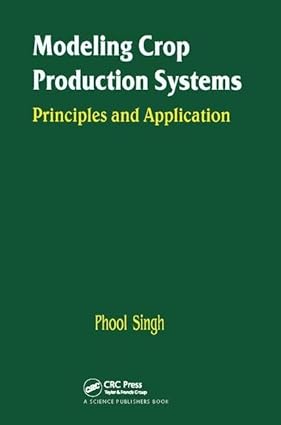

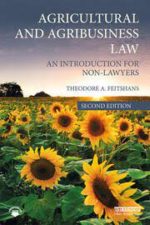
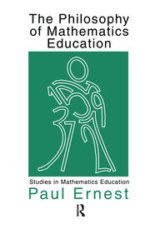

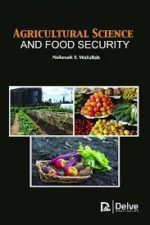

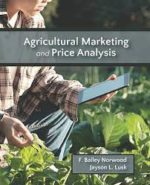
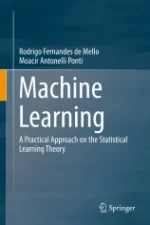
Be the first to review “Modeling Crop Production Systems: Principles and Application 1st Edition by P Singh (Author)”